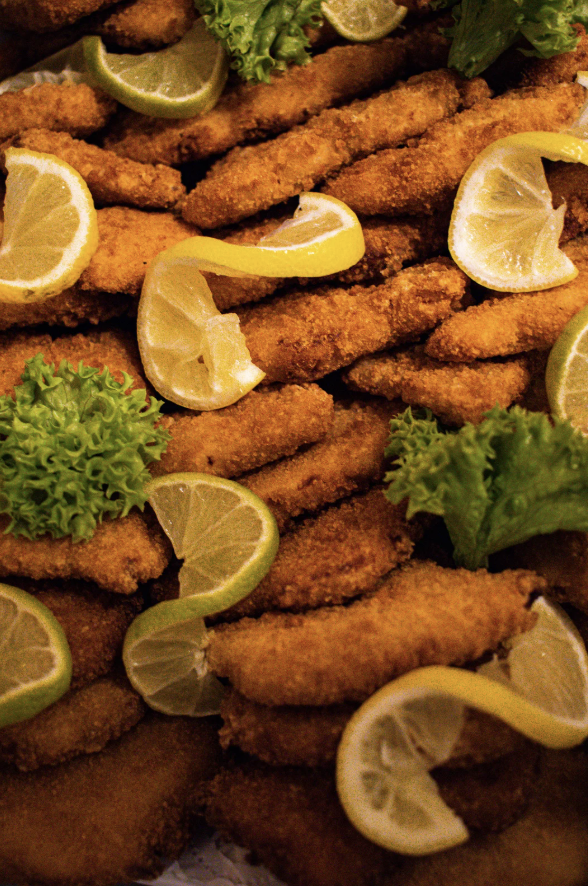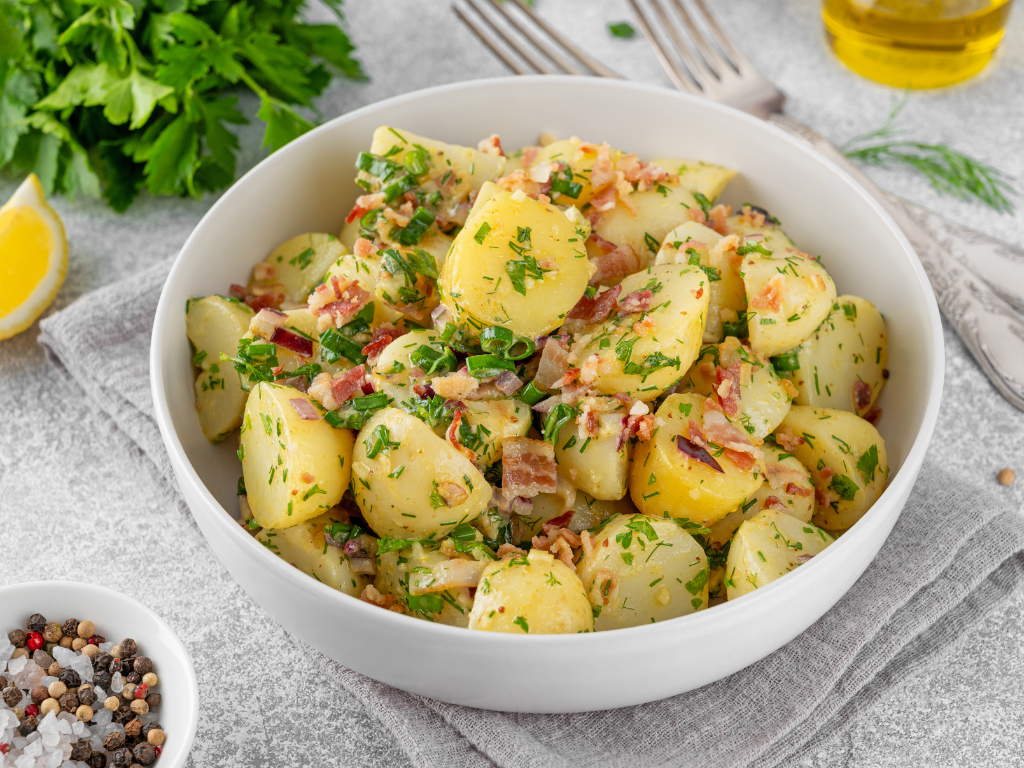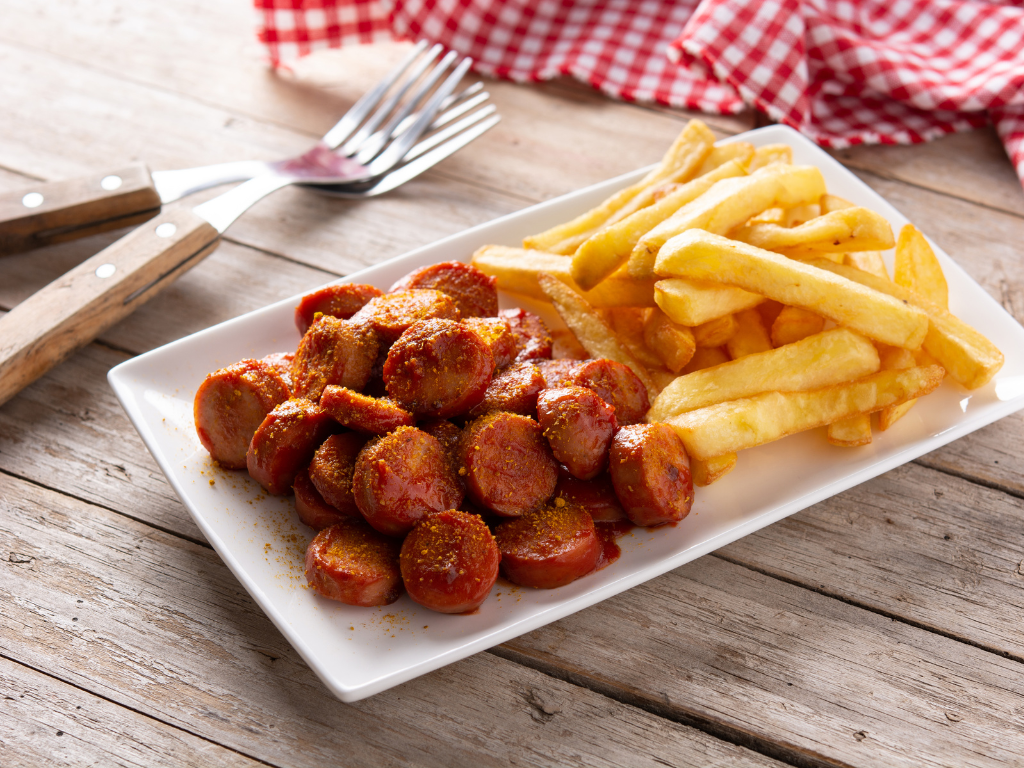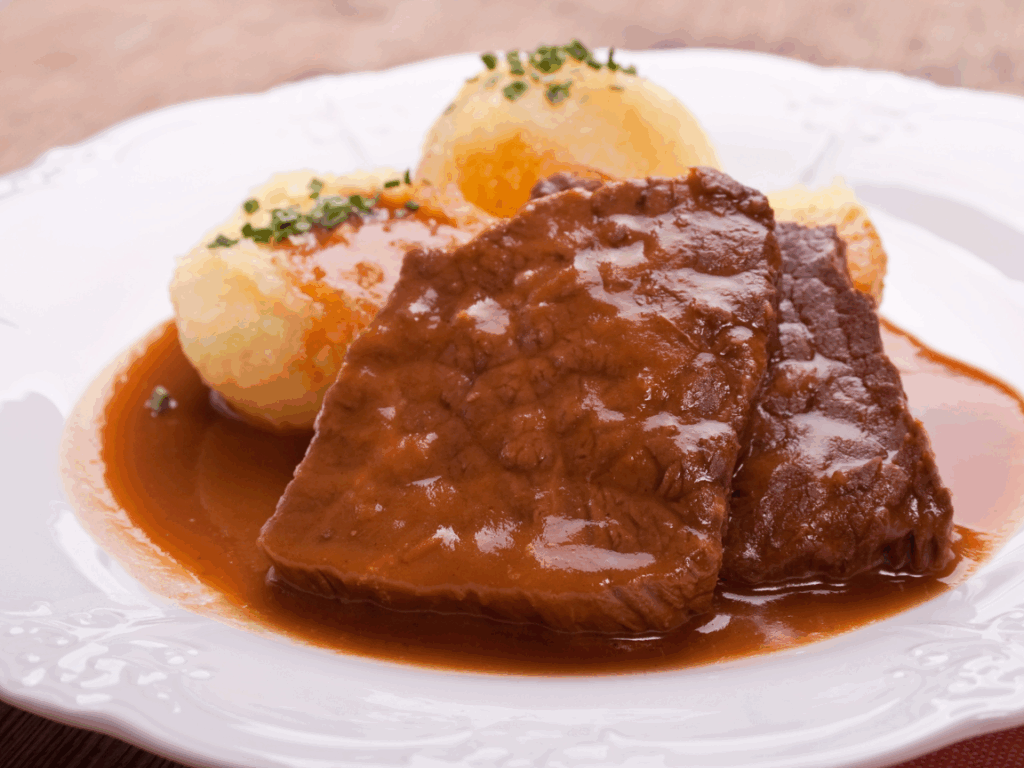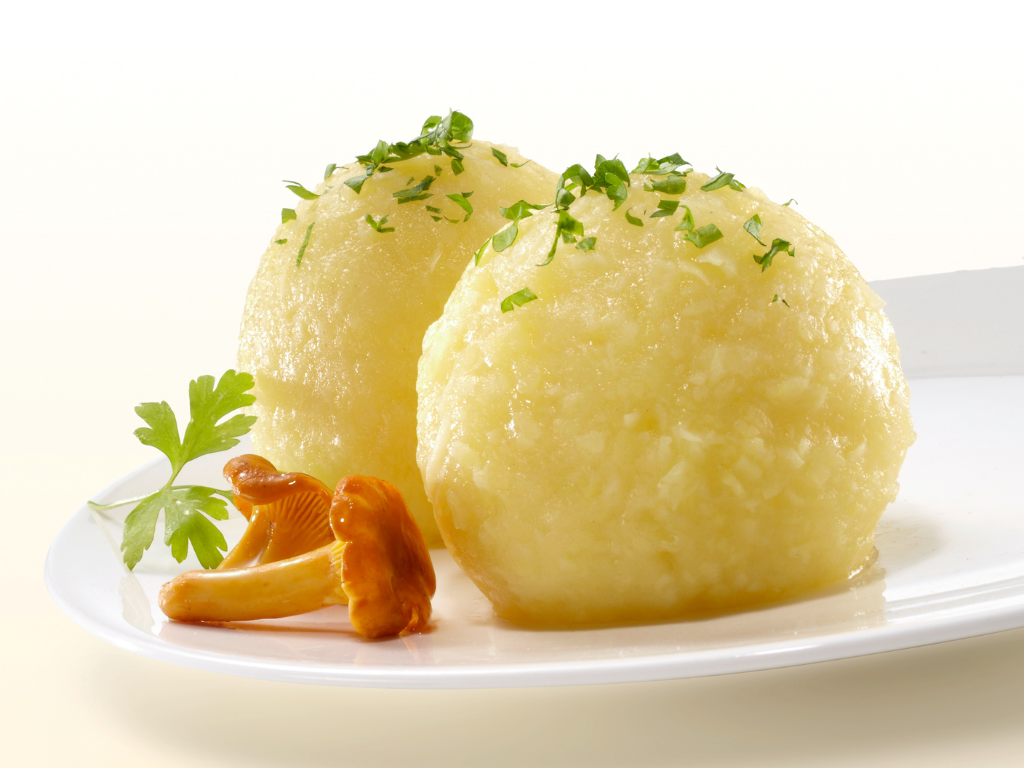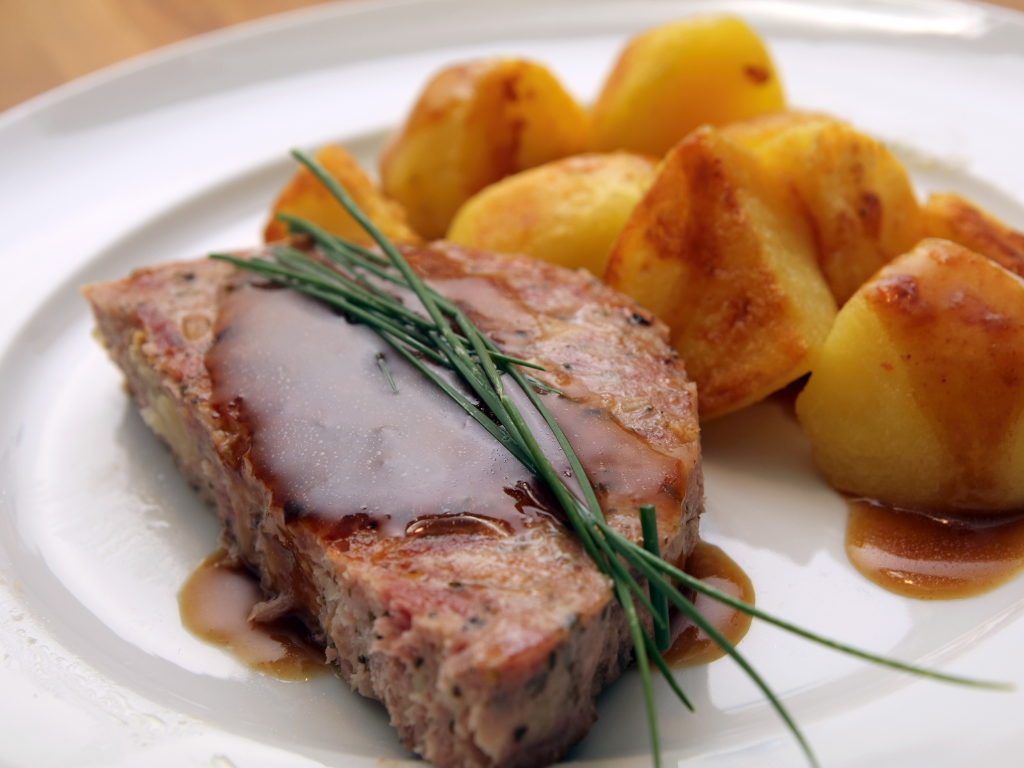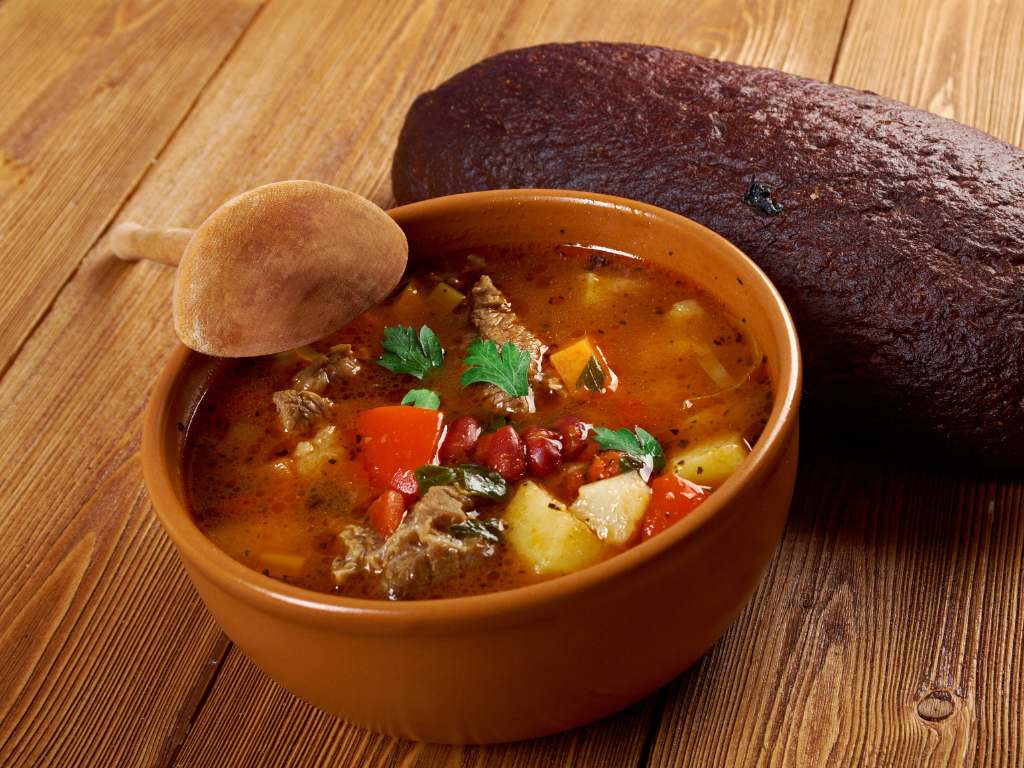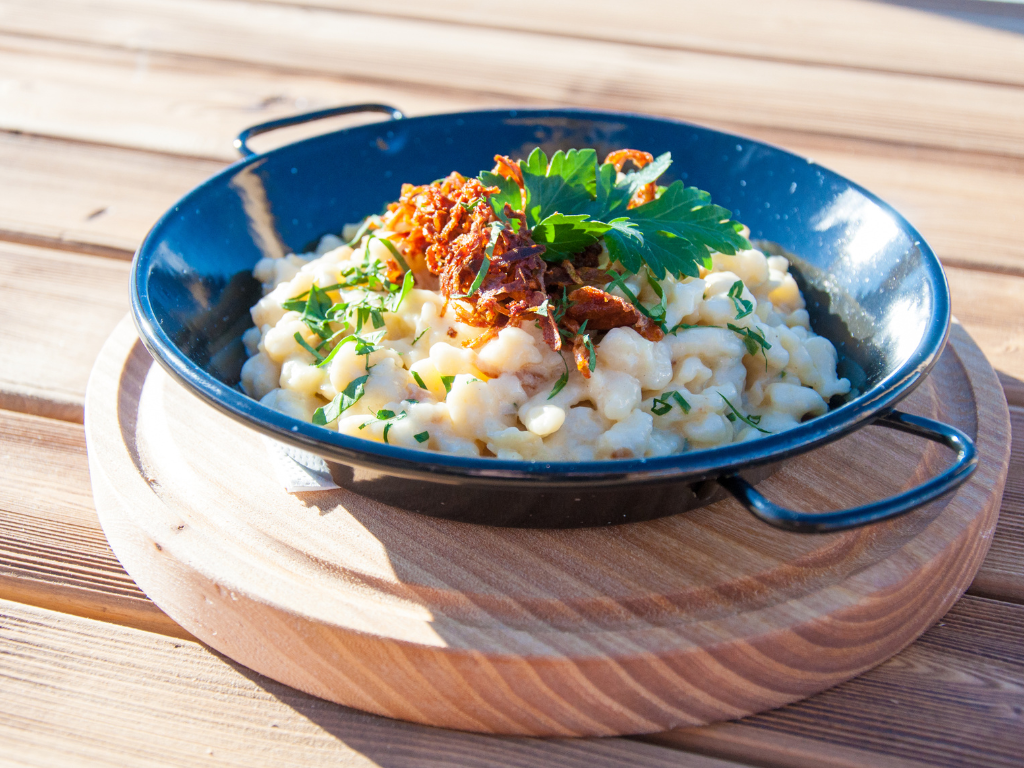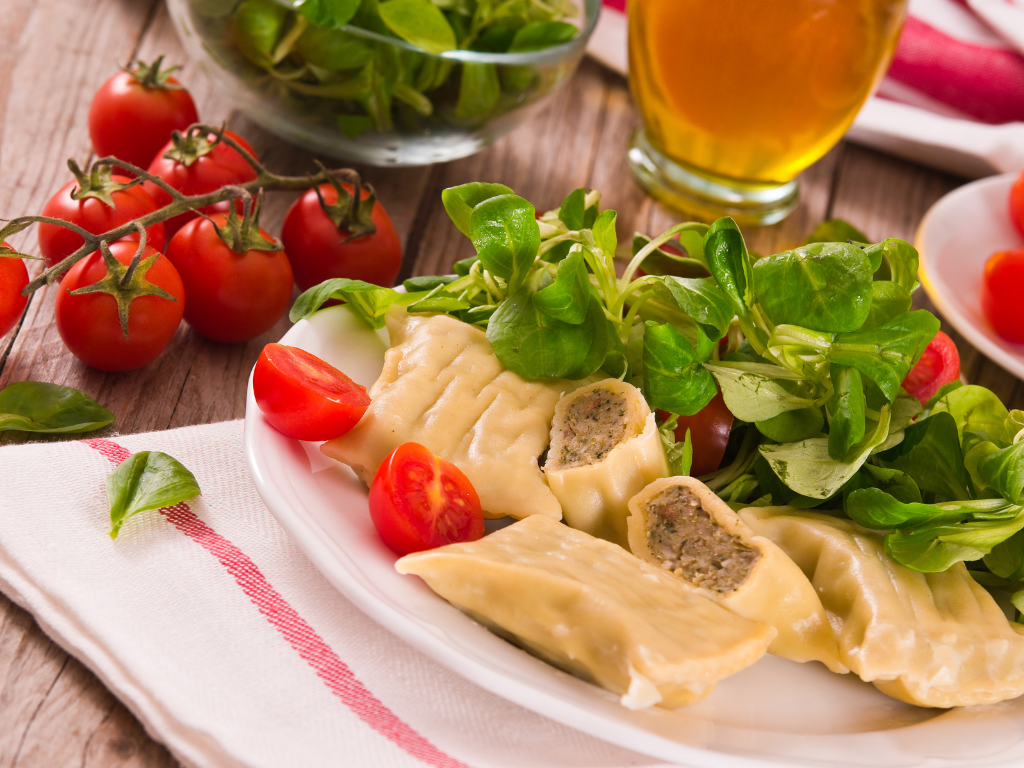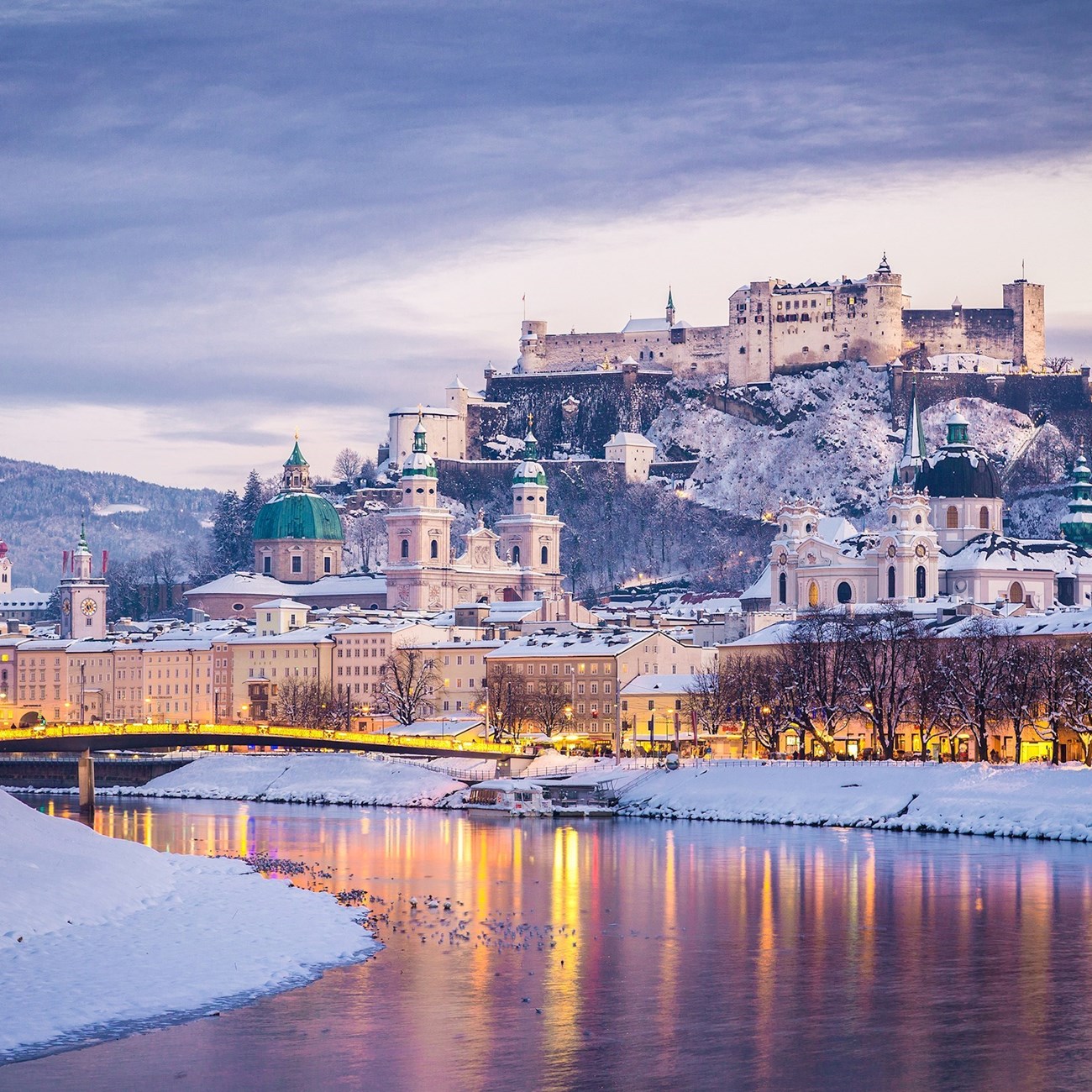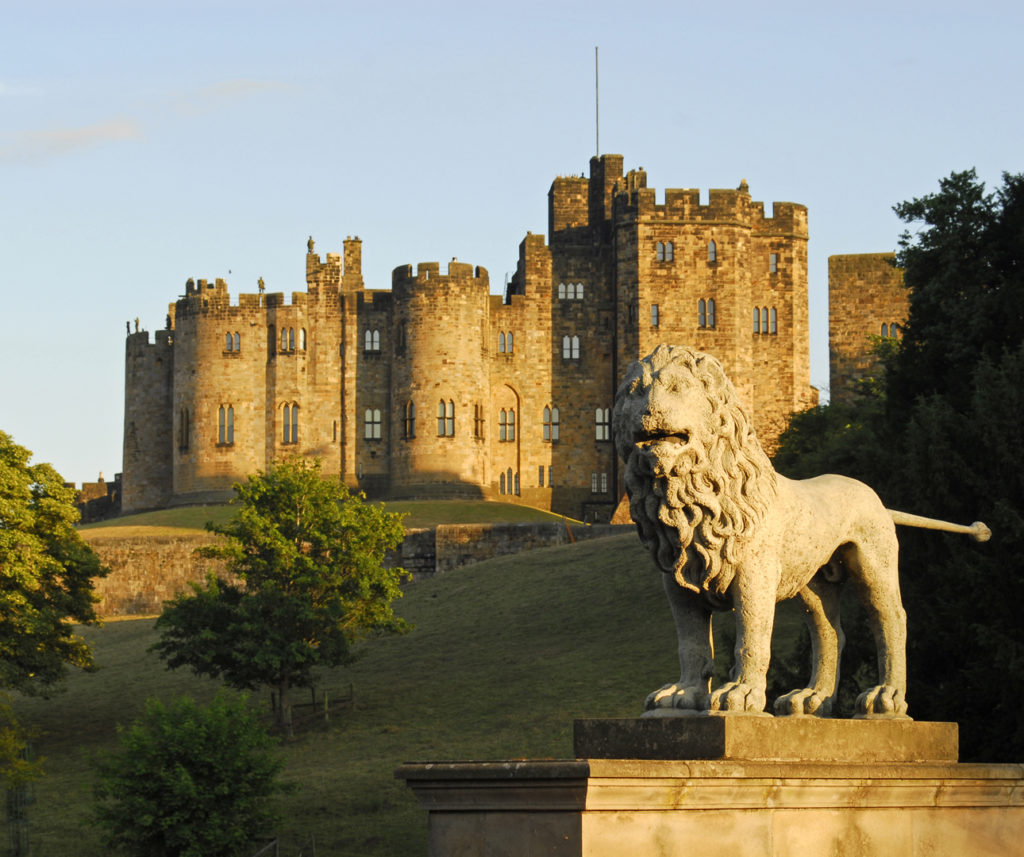12-14. Sweet Treats: Apfelstrudel, Schwarzwälder Kirschtorte, and Spaghettieis
No guide to the best food in Germany is complete without dessert. Apfelstrudel—layers of spiced apple, raisins, and flaky pastry—is a classic you’ll find everywhere. Meanwhile, the decadent Schwarzwälder Kirschtorte (Black Forest gateau) combines chocolate, cream, and cherries for an unforgettable cake. And for a playful twist, try spaghettieis: a plate of vanilla ice cream shaped to look like spaghetti, drizzled with strawberry sauce and white chocolate shavings.
Apfelstrudel: A Sweet Slice of Tradition
Few desserts capture the essence of German baking like apfelstrudel. Thin layers of pastry wrap around spiced apples, raisins, and a hint of lemon, creating a dessert that’s both light and comforting. Served warm, often with a scoop of vanilla ice cream or a dollop of cream, apfelstrudel is the perfect end to a meal.
This beloved dish has roots in the Austro-Hungarian Empire but has become a staple in German cafés and homes alike. It’s a reminder that some of the best food in Germany is shared across cultures and borders, shaped by history as much as by taste.
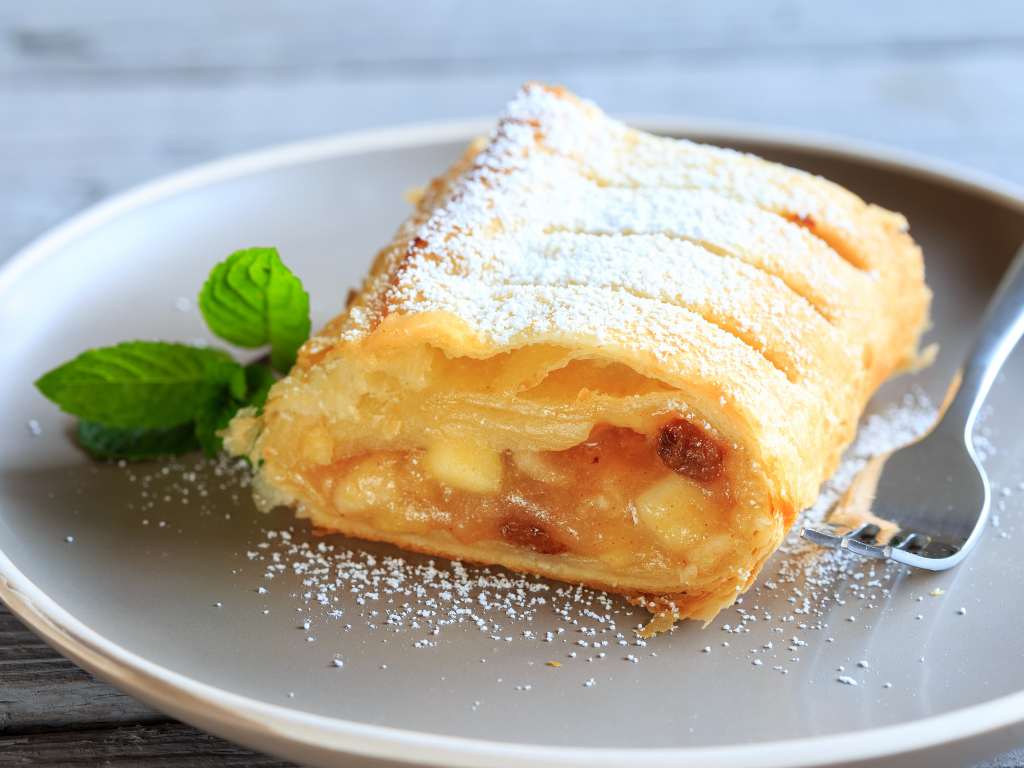
Schwarzwälder Kirschtorte: The Black Forest Delight
Schwarzwälder Kirschtorte, or Black Forest cake, is a showstopper. This towering dessert layers chocolate sponge, whipped cream, and cherries, all infused with a generous splash of cherry schnapps (Kirschwasser). The combination of rich chocolate and tart cherries is irresistible, and the presentation—often adorned with chocolate shavings and bright red cherries—makes it a showstopper on any dessert table.
Black Forest cake is a symbol of celebration in Germany, enjoyed at birthday parties, weddings, and found in cafés in the heart of the Black Forest. It’s a reminder of Germany’s love for desserts that delight the senses. Served with a strong coffee or as part of a traditional Kaffee und Kuchen ritual, it’s an experience as much as a dish.
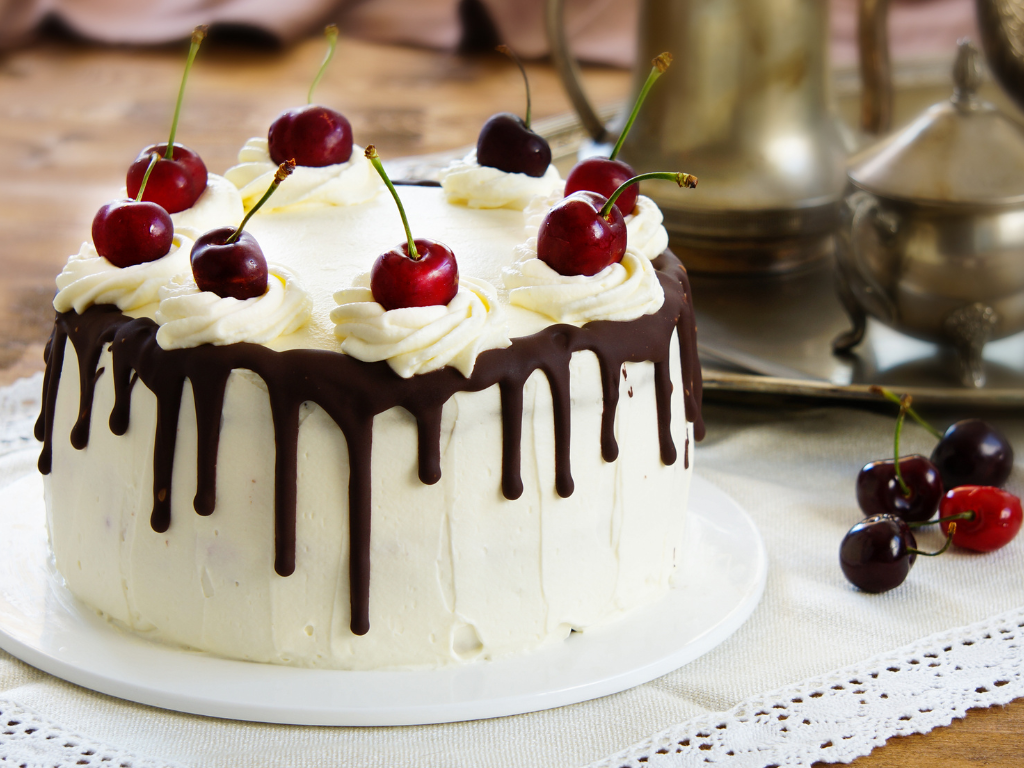
Spaghettieis
Spaghettieis is a playful dessert that’s been delighting sweet-toothed locals and visitors since the 1960s. This unique treat looks like a plate of spaghetti, but it’s actually vanilla ice cream pressed through a potato ricer to create thin strands that resemble pasta. It’s then topped with strawberry sauce to mimic tomato, and a sprinkle of grated white chocolate to look like Parmesan. The result is a charming, whimsical dish that’s as much fun to eat as it is to look at.
Spaghettieis is a must-try, especially during the warmer months when ice cream parlours are at their busiest. It’s a reminder that German cuisine can be surprising and playful, blending nostalgia with a touch of humor.
19-21. Sweet Treats at German Christmas Markets
When it comes to German desserts, we can’t go without mentioning its Christmas markets. These festive fairs are as much about the food as they are about the twinkling lights and festive atmosphere—and when it comes to sweets, they deliver in spades. Here’s what you’ll want to try.
Lebkuchen
Lebkuchen is one of the most iconic treats of the German Christmas season. Soft, spiced, and sometimes dipped in chocolate or glazed with sugar, these gingerbread-like biscuits often take on heart-shaped forms decorated with colourful icing and playful messages. Found at markets and bakeries alike, Lebkuchen offers a perfect blend of sweetness, spice, and nostalgia.
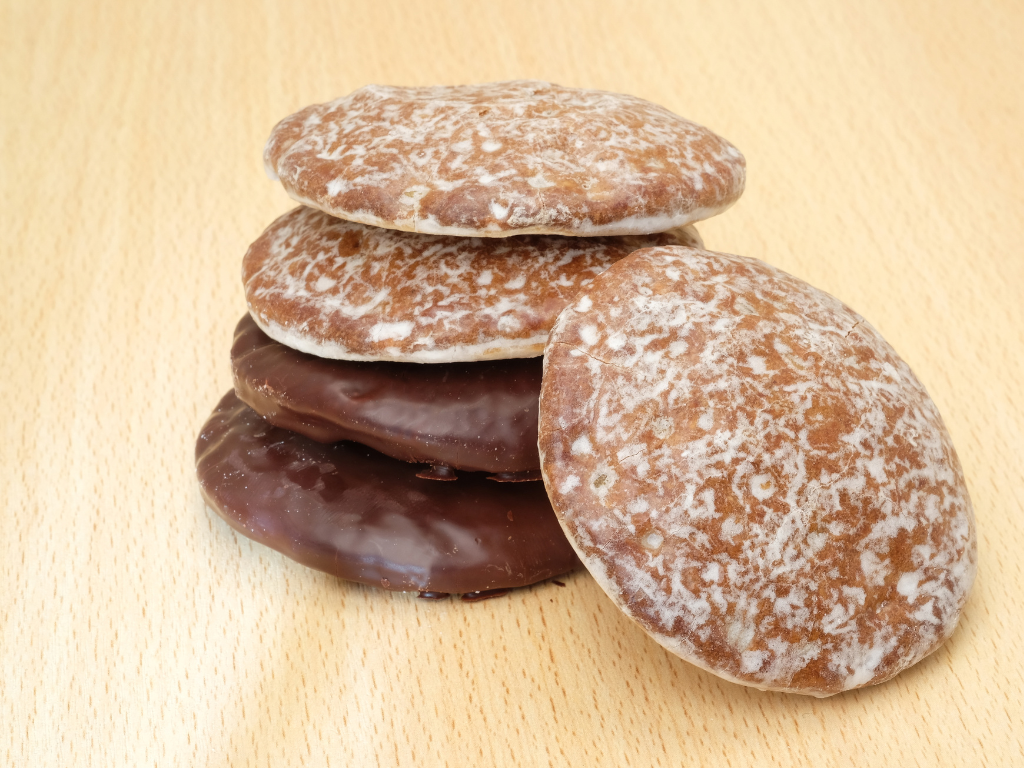
Stollen
Stollen is a dense, buttery fruit bread that’s synonymous with German Christmas traditions. Packed with raisins, candied peel, and often a ribbon of marzipan through the centre, it’s dusted with powdered sugar to resemble a snowy coating. It is a rich, satisfying treat that’s usually enjoyed in thin slices with a cup of coffee.
Gebrannte Mandeln
No trip to a German Christmas market is complete without a paper cone of Gebrannte Mandeln—warm, sugar-coated almonds that fill the air with the irresistible scent of caramel and spice. Each bite is a perfect balance of crunch and sweetness, making these almonds a must-try for any festive wanderer.
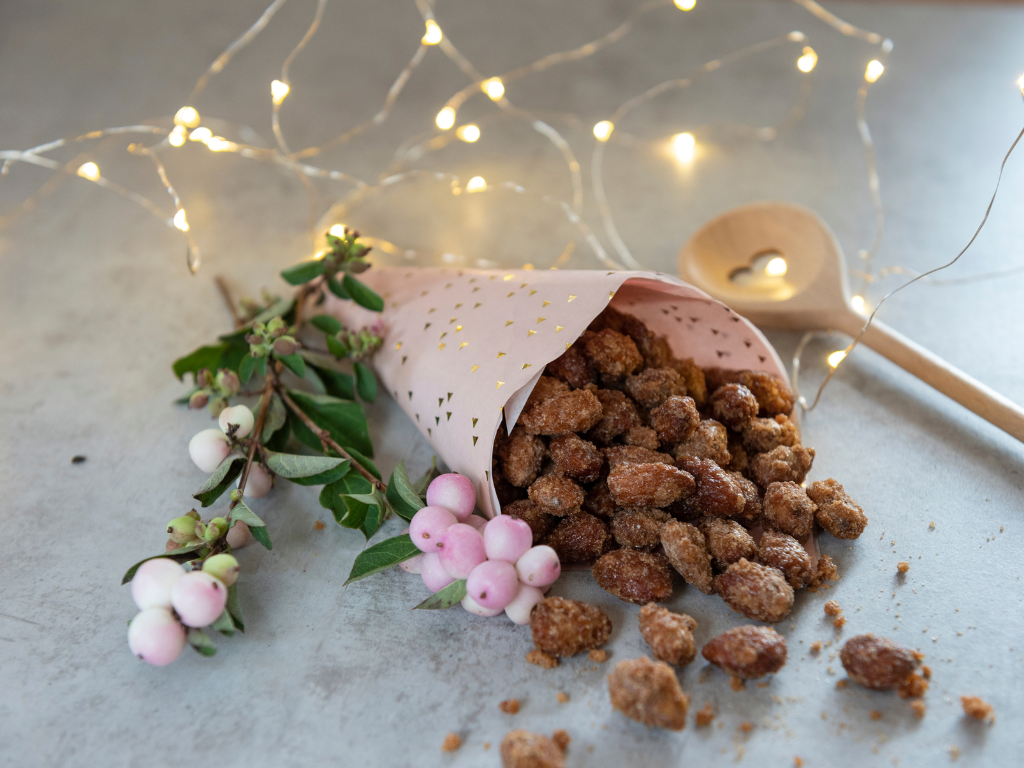
Schmalzkuchen
Schmalzkuchen are small, golden doughnut bites that are fried to perfection and dusted with powdered sugar. Served warm and eaten straight from a paper bag, they’re a market favorite during the colder months—sweet, slightly crisp on the outside, and wonderfully soft inside.
Mutzenmandeln
A close cousin to schmalzkuchen, mutzenmandeln are almond-shaped fried biscuits with a crunchy exterior and soft, cakey centre. Lightly sweetened and dusted with powdered sugar, they’re especially popular at Christmas markets, offering a bite-sized treat to enjoy while wandering among the festive stalls.
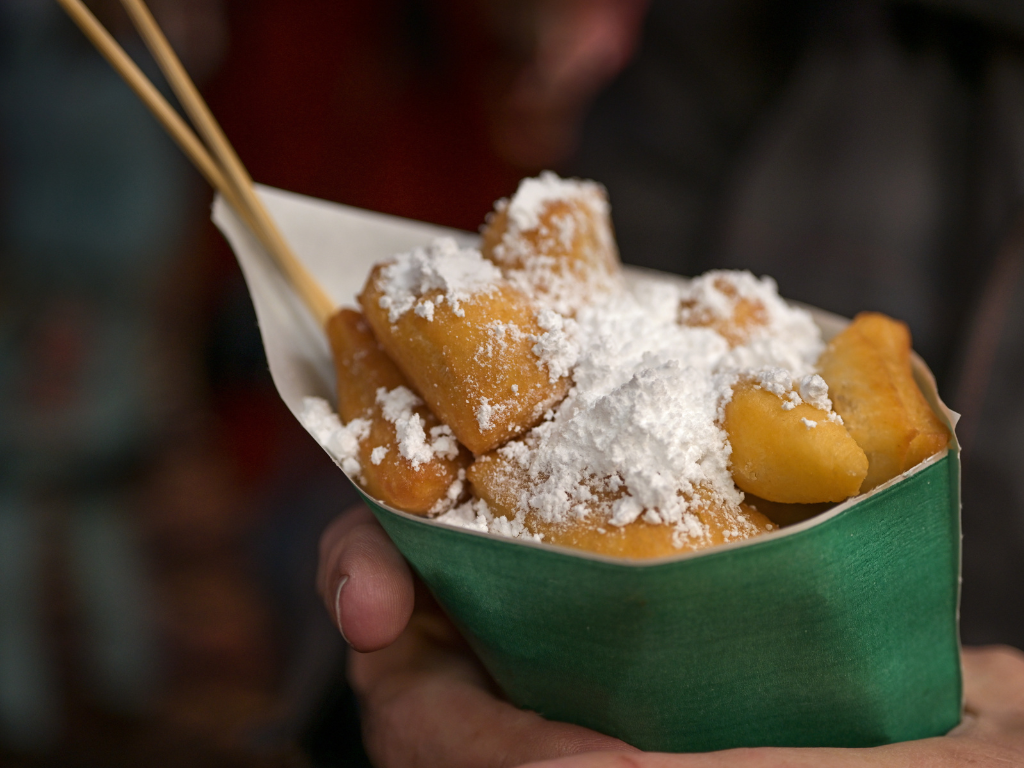
Reibekuchen with Applesauce
While reibekuchen are technically savory—crispy, pan-fried potato pancakes—their classic pairing with sweet applesauce gives them a delightful twist. This balance of salty and sweet makes them a standout at Christmas markets, where the scent of sizzling pancakes mingles with spiced cider and roasting nuts.
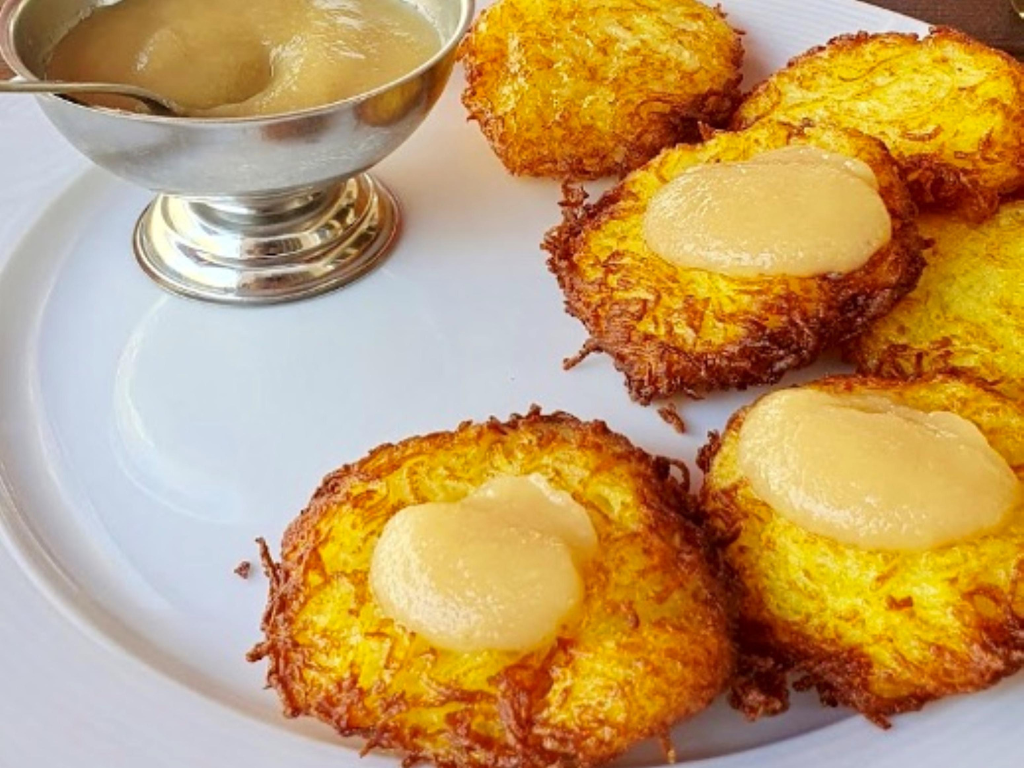
Candied Fruits
For a simple yet indulgent market snack, look no further than candied fruits. Apples, grapes, bananas, and strawberries are dipped in glistening caramel or smooth chocolate, offering a juicy burst of sweetness in every bite. Their glossy coating catches the light—an edible decoration that tastes as good as it looks.
These treats make Christmas markets in Germany an essential part of any festive foodie itinerary—especially if you’ve got a sweet tooth.
Read up on Festive Foods to Try at Christmas Markets from all over Europe
What is the National Dish of Germany?
The national dish of Germany is often considered to be sauerbraten, a tender pot roast that’s marinated in vinegar and spices for days before being slow-cooked. It’s a dish that symbolises Germany’s love of hearty, comforting meals that bring people together. Other contenders include bratwurst and schnitzel, but sauerbraten remains the classic choice.
